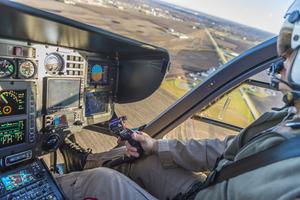Team
Medical Crew
The medical flight crew consists of two flight nurses or a flight nurse and flight paramedic. The crew trains in aeromedical patient transport with specialized skills in intubation, surgical airway, needle thoracentesis, pericardiocentesis, transtracheal jet ventilation for critical patients care. All flight nurses and paramedics have a minimum of five years of critical care experience with currency in the following certifications:
- Trauma Nurse Specialist or Trauma Nurse Core Curriculum
- Prehospital Registered Nurse Certification
- Basic Trauma Life Support or Pre-hospital Trauma Life Support
- Advanced Cardiac Life Support
- Pediatric Advanced Life Support or Emergency Nurse Pediatric Course
- Neonatal Resuscitation Provider
Many maintain national certifications such as Certified Emergency Nurse (CEN), Certified Flight Registered Nurse (CFRN), or Critical Care Registered Nurse (CCRN) or Nationally Certified Flight Paramedic (FP-C) in addition to the required certifications. Specialty teams are utilized for maternal (high-risk obstetrics) and neonatal (high-risk premature infant) services. All members are involved in pre-hospital, hospital and regional staff education.
Flight Nurse Guidelines
- Five years of critical care nursing experience in an ICU or ED.
- Possess excellent clinical assessment skills.
- Seek opportunities to develop independent decision-making skills, i.e., charge role.
- Demonstrate an ability to problem solve and be resourceful.
- Obtain certifications and seek educational conferences and opportunities related to transport.
- Prehospital care experience, i.e., EMT training, Prehospital RN course.
- Develop public speaking skills.
- Obtain nationally recognized certifications, i.e., CEN (Certified Emergency Nurse), CFRN (Certified Flight Registered Nurse), or CCRN (Certified Critical Care Nurse).
To learn more about this unique critical care role or inquire about other nursing career opportunities afforded at OSF HealthCare Saint Francis Medical Center, please contact our recruiting specialists at (309) 655-4008 or (309) 655-2036, or complete our online application.
 Pilots and Mechanics
Pilots and Mechanics
The active fleet currently consists of four American Eurocopter EC 145 helicopters. Each helicopter can transport two patients, if necessary, as well as two pilots and two members of the medical crew.
Pilots are required to possess a minimum of 2,000 hours of helicopter pilot-in-command time, an FAA commercial helicopter certificate and current instrument rating. The mechanics receive mandatory annual maintenance training to maintain currency with aircraft and maintenance procedures. Aircraft are hangared on-site with the capability to perform minor and major maintenance requirements.
Flight Communications
Communications is the framework that binds the components of an EMS system together. The communications system links one emergency health care provider with other members of the emergency health care team 24 hours a day. The heart of any EMS system is the communications control center. If this control center is the cornerstone of the EMS system, then the dispatcher is the key to the control center.
At OSF Life Flight, this department is called Flight Com, and is staffed with medical transfer specialists whose minimal training begins at the EMT-basic level; with many having obtained NAACS flight communicator certification, the industry standard for specialized training for helicopter emergency medical service dispatch.
Technology
Computers, sophisticated electronics including GPS satellite navigation tracking, telephones, computerized road and navigational maps, computerized radio consoles and a flip chart of standardized dispatch policies and procedures surround them.
Two or more transfer specialists staff the control center at all times. They work to assure rapid patient access to a reliable and effective EMS system.